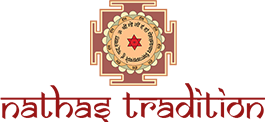News
-
 Pranayama workshop, Mar 1-7
Pranayama workshop, Mar 1-7
-
 21-day Pranayama challenge
21-day Pranayama challenge
-
 Nāda meditation workshop, January 8-12
Nāda meditation workshop, January 8-12
-
 April 3, Navaratri with Yogi Matsyendranath Maharaj, Australia, Queensland
April 3, Navaratri with Yogi Matsyendranath Maharaj, Australia, Queensland
-
 March 17, 2020. Purifiying Pranayama With Yogi Matsyendra Nath
March 17, 2020. Purifiying Pranayama With Yogi Matsyendra Nath
-
 November 2019, Tantra Workshop Series in Argentina
November 2019, Tantra Workshop Series in Argentina
-
 Workshop in Gualeguaychu
Workshop in Gualeguaychu
-
 17-18 November 2018, Yogi Matsyendranath in Źarate (Argentina)
17-18 November 2018, Yogi Matsyendranath in Źarate (Argentina)
-
 15-16 November 2018, Yogi Matsyendranath visit to Uruguay
15-16 November 2018, Yogi Matsyendranath visit to Uruguay
-
 12 Nov 2018, Lecture at USAL (Salvador University)
12 Nov 2018, Lecture at USAL (Salvador University)
-
 10-11 November 2018, Workshops in Quilmes and La Plata (Argentina)
10-11 November 2018, Workshops in Quilmes and La Plata (Argentina)
-
 8 November 2018, Open conference in Necochea (Argentina)
8 November 2018, Open conference in Necochea (Argentina)
-
 2,3,4 November 2018 - Participating in XVI Retreat International of Yoga and Meditation
2,3,4 November 2018 - Participating in XVI Retreat International of Yoga and Meditation
-
 Programme in Québec (Canada) 13-16 June
Programme in Québec (Canada) 13-16 June
-
 Melbourne Book Launch
Melbourne Book Launch
-
 4-years Summer Program
4-years Summer Program
-
 Biography of a Russian Yogi
Biography of a Russian Yogi
-
 November 2017, Visit of Yogi Matsyendranath to Argentina
November 2017, Visit of Yogi Matsyendranath to Argentina
-
 Satsangs of Yogi Matsyendranatha Maharaj in Berlin
Satsangs of Yogi Matsyendranatha Maharaj in Berlin
-
 Seminars and trainings in June-July 2015 (France)
Seminars and trainings in June-July 2015 (France)
Padma-purana
Padma-purana
The Padma Purana is one of the most important and largest among the eighteen maha-puranas. Contains about 55 thousand shlokas (verses). This is one of the most significant and early works of the Purana genre, dated by the Indologists (along with Vishnu-, Markandeya-, Vayu-, Brahmanda-, Linga- and Kurma-purana) to the 4-8 centuries. The text of the Padma-purana has come down to us in two main reviews, the later of which contains six "books" (khandas), and the earlier one — five books.
Part 1, called Srishti-khanda ("Book of the world-creation"), opens with a traditional introduction for the Puranas.
Part 2, Bhumi-khanda ("Book of Earth"), begins with the legends of Somasharmana, born among demons, to whom the origin was not an obstacle to become in the future a famous admirer of Vishnu, known as Prahlada.
In part 3, Svarga-khanda ("Book of Heaven"), which is a symmetrical opposition to the previous one, the worlds of the various gods are described: Surya, Indra, Agni, Yama, in the description of which many legends are woven.
Part 4, Patala-khanda ("The Book of the Lower World"), as its name implies, is dedicated to the world of the Nagas, half-human-half-demes, or serpent deities. The mention of Ravana as the king of demons serves as a pretext for presenting the story of the Ramayana, which here partially corresponds to the famous poem and partially to the poem of Kalidasa Raghuvansha.
The concluding part 5, Uttara-khanda ("The Last Book"), is a detailed explanation of the Vishnuit cult and holidays.

